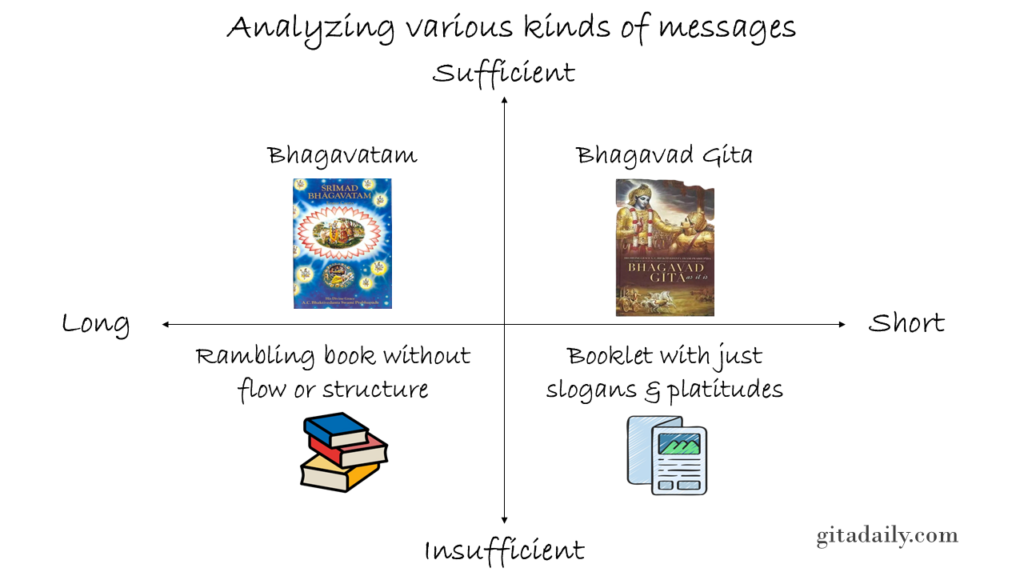The length of a talk is not as crucial as its completeness. A short talk can be insufficient, a long talk can be sufficient, and a long talk can also be insufficient.
Compared to most sacred texts, the Bhagavad Gita is remarkably short. The entire text can be narrated by those proficient in Sanskrit in an hour or two, and even those not very proficient can recite it in three to four hours. Yet, at the end of the conversation, Krishna asks Arjuna in 18.72 whether he has been able to hear with attention and whether he has gained enough comprehension to dissipate his illusion. The implication of these questions is that Krishna is ready to clarify, elaborate, or even repeat whatever Arjuna has not been able to grasp. Arjuna responds in the next verse, stating that his illusion has been dispelled and that he has become composed and convinced to act as an instrument of the Divine will (18.73). Arjuna’s answer indicates that Krishna’s words were sufficient, even though they were short.
There are other sacred texts in the broader Bhakti tradition, such as the Shrimad Bhagavatam, which extend over thousands of verses and were narrated over seven days. The narration in that book helped the seeker-king Parikshit prepare for his death by becoming absorbed in remembrance of the Divine. Thus, the Bhagavatam is long and sufficient.
In today’s world, people are often impeded by shortened attention spans, and speakers are frequently encouraged to keep their talks short. Looking at the example of the Bhagavad Gita, we can see that short messages have precedents in the tradition. However, in keeping messages short, we may sometimes fail to ensure that they are sufficient. If a message is so short as to convey no meaningful theme, then the problem arises not from its shortness but from its insufficiency. Conversely, someone may give a very long talk but ramble without conveying a coherent or clear message centered on a particular theme. In such cases, the problem arises not from the talk being too long but from its being insufficient in the sense of being incoherent or disconnected.
When speakers focus on ensuring that their messages are sufficient in the form of being complete enough to give something of substantial value to their audiences, then speakers who give short messages will find their audiences, and speakers who give long messages will also find their audiences. Both will be able to serve and benefit their audiences, respectively.

Summary:
- The Bhakti tradition offers examples of both short messages, as in the Bhagavad Gita, and long messages, as in the Shrimad Bhagavatam, but what unifies both is that they are sufficient for serving the needs of their particular hearers.
- Rather than worrying too much about whether our talk is too short or too long, if we focus on ensuring that we are sufficiently serving the needs of our audiences, we will be able to arrive at the appropriate length for our talks.
- We will also find the appropriate audiences for those kinds of talks.
Think it over:
- How can we know that the Bhagavad Gita’s message is sufficient?
- How is the Shrimad Bhagavatam’s message different from and similar to the Bhagavad Gita’s message?
- What should we focus on while preparing a message?
***
18.73 Arjuna said: My dear Kṛṣṇa, O infallible one, my illusion is now gone. I have regained my memory by Your mercy. I am now firm and free from doubt and am prepared to act according to Your instructions.




Leave A Comment